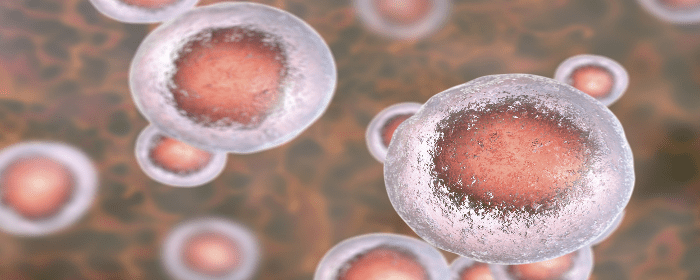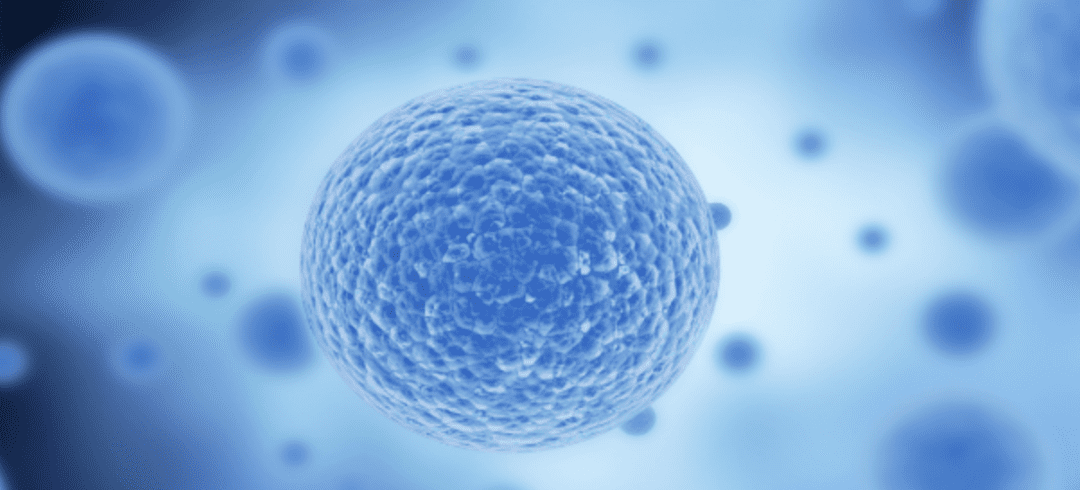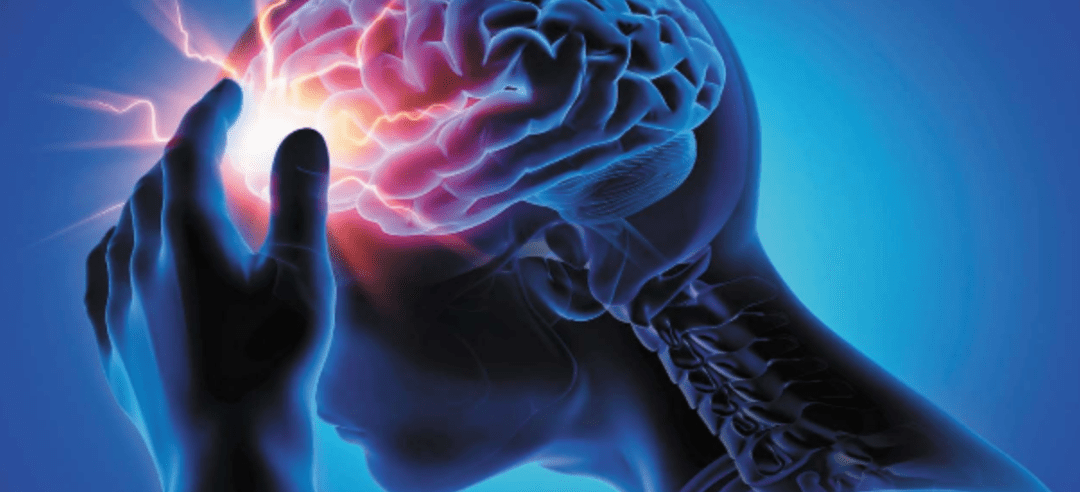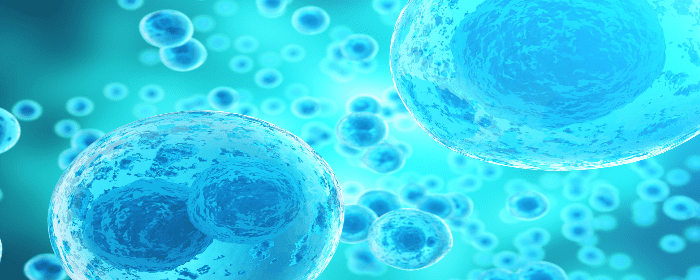
by admin | Jan 21, 2022 | Stem Cell Therapy, Mesenchymal Stem Cells, Stem Cell Research, Stroke
According to the CDC, stroke continues to be a major cause of serious disability for adults. It is also estimated that nearly 800,000 people in the United States have a stroke each year[1]. While 80% of those experiencing a stroke survive for at least one year following the event, more than 70% will continue to experience long-term disabilities.
Stroke is divided into three distinct phases: acute, subacute, and chronic phases. The acute phase of stroke occurs within 24 hours of the actual ischemic event. The subacute phase starts at 24 hours and lasts up to 3 months. The chronic phase of stroke, by definition, starts at 3 months.
While stroke patients tend to see some response to rehabilitation efforts occurring in the chronic phase, they tend to quickly plateau, leaving many with serious chronic neurological and functional disabilities. To date, there are no approved treatments for the chronic phase of stroke.
For the purposes of this study, Steinberg et al. report the two-year outcomes of their phase 1/2a study examining chronic stroke patients after implantation of mesenchymal stem cells (MSCs). This study specifically examined the outcomes of 18 patients who were at least 6 months post-stroke onset and had chronic motor deficits secondary to the nonhemorrhagic stroke.
At the 1-year point of this study, the authors reported the implantation of bone marrow-derived MSCs (BMD MSCs) was generally safe, well-tolerated, and associated with significant improvement in clinical outcomes.
There were no correlations between improvement in clinical outcomes and cell dose, baseline patient age, or baseline stroke severity. However, two years after implantation of MSCs, those enrolled in this study experienced significant improvement in motor impairment scales as indicated by a number of scores, including the ESS, NIHSS, F-M total, and FMMS scores.
Although all enrolled patients experienced at least one Treatment-Emergent Adverse Event (TEAE), with headache and nausea being the most common, 94.4% of the TEAEs were determined to be unrelated and no one withdrew from the study.
Interestingly, the authors reported that there also appears to be a significant correlation between the size of newly appearing transient lesions primarily in or adjacent to the premotor cortex – a finding that remained consistent at month 12 and month 24 of this study.
While Steinberg et al.’s reported findings are encouraging, the authors point out that the small scale and uncontrolled study design mean the findings should also be interpreted with caution.
Steinberg et al conclude that their findings associated with this completed, open-label, single-arm phase 1/2a study was consistent with the data at the 1-year point and indicated that treatment of chronic stroke with BMD MSCs after 2 years continued to be safe and was associated with sustained and significant improvements in clinical outcomes.
Given the findings of this study, the authors highlight the potential of MCSs, and specifically SB623 cells used in this study, as a potential treatment for patients with chronic ischemic stroke.
Source: “Two-year safety and clinical outcomes in chronic ischemic stroke ….” 23 Nov. 2018, https://pubmed.ncbi.nlm.nih.gov/30497166/.
[1] “Stroke | cdc.gov.” https://www.cdc.gov/stroke/index.htm.

by Stemedix | Jan 10, 2022 | Stem Cell Therapy, Traumatic Brain Injury
TBIs, or traumatic brain injuries, are typically one of the most challenging types of medical ailments to treat. This is due to the sheer complexity of the human brain. Here we talk about how to heal traumatic brain injuries.
Fortunately, stem cell therapy may provide medical professionals with a viable treatment option when encountering patients suffering from TBIs. Stem cells are unique cells that are capable of transforming into other types of cells, including those present within the brain.
While stem cells have shown great promise when used to treat other types of soft tissue injuries, can they help heal traumatic brain injuries? Thus far, researchers have not found a definitive answer. However, initial data shows that stem cell therapy may have a positive impact on TBI patients.
Types of Traumatic Brain Injury
Before we discuss how stem cell therapy may benefit individuals that have suffered a TBI, let’s briefly recap the various types of traumatic brain injuries.
Concussions
The most common type of traumatic brain injury is concussions. Concussions can occur when a person’s head collides with another individual, a fixed object, or a moving object. A prime example of an injury-causing event is when a football player’s helmet hits the helmet of another player or the turf. Concussions are characterized by a loss of consciousness, an altered mental state, and headaches.
Penetration Injuries
A less common but still frequent type of TBI is caused by a penetration injury. These injuries occur when a foreign object pierces the skull and damages the brain. Penetration injuries can be caused by sharp objects, bullets, and shrapnel.
Diffuse Axonal Injuries
The third class of TBI is referred to as a diffuse axonal injury. This type of injury occurs when a person experiences rapid deceleration or acceleration. Diffuse axonal injuries are most likely to occur during motor vehicle accidents.
How Stem Cells May Help
Every year, approximately 1.5 million people suffer from TBIs in the U.S. alone. Roughly 230,000 people are admitted to the hospital and survive their injuries. Of these, about one-third (80,000–90,000) suffer from some sort of long-term disability.
In the past, clinicians focused on managing the many symptoms of TBIs via the use of medications and rehabilitative therapies. However, stem cell therapy has become a safe and natural alternative treatment option for many different neurodegenerative conditions, including TBIs.
Early research suggests that stem cell therapy may be able to:
- Improve cognitive function
- Improve appetite
- Improve mood and stamina
- Decrease chronic pain
- Increase energy
If you or a loved one is suffering from a TBI injury, stem cell therapy might be able to help mitigate or improve symptoms. If you would like to learn more contact us today and speak with a care coordinator.

by admin | Jan 7, 2022 | Stem Cell Therapy, Kidney Disease, Mesenchymal Stem Cells, Stem Cell Research
Current estimates indicate that kidney disease currently affects over 37 million US adults and over 10% of the global population[1]. Characterized by gradual loss of function, kidney disease generally progresses over time and culminates in the inability to remove waste and excess fluid from the blood[2].
Often demonstrating little to no symptoms in its early stages, chronic kidney disease tends to demonstrate increasing and dangerous symptoms as the condition advances.
To date, treatment for chronic kidney disease has been centered around causal control as a way of slowing the progression of the condition. However, these therapeutic treatment efforts, including multidrug therapy, have demonstrated an inability to reverse the condition from progressing to end-stage renal disease (ESRD) and requiring additional therapy, dialysis, or kidney transplantation.
Considering the high cost and disruption to normal life function associated with dialysis and the severe shortage of viable kidney donors, neither dialysis nor transplant has proven to be ideal or often recommended treatment strategies. As a result, there has been renewed interest in new and more effective therapeutic options to alleviate, cure, or prevent kidney disease and to improve a patient’s survival and quality of life.
Evaluating the numerous and growing therapeutic applications associated with stem cells’ ability for self-renewal, proliferation, and differentiation, Liu et al.’s review explores the potential benefits offered toward improving renal function and supporting structural repair in those afflicted with kidney disease.
Despite the promising benefits of using stem cells to kidney repair and disease treatment demonstrated through prior preclinical study, the authors point out that certain ethical issues regarding the origin of stem cells, and specifically embryonic stem cells (ESCs) need to be addressed and overcome before clinical application of SCs.
Regardless of the stated drawbacks, Liu et. al concludes that the existing evidence demonstrates that stem cell therapy appears to be a clinically viable alternative for kidney disease, specifically for restoring normal kidney function and for progressing understanding about tissue regeneration, drug screening, and disease modeling.
Although stem cells demonstrate promise in this regard and while the immunomodulatory properties of mesenchymal stem cells (MSCs) appear to make them the most promising SC for treating kidney disease, the authors also point out that further research is needed before definitively concluding which source of SC is best suited for this application.
As a result of this review, and in an effort to realize these findings into clinical applications in the future, the authors call for larger rigorously designed clinical trials to further assist in determining the clinical efficacy of SC therapy in kidney disease – including the appropriate selection of cell types, number of SCs required, and the appropriate route of administration.
Source: “Stem cells: a potential treatment option for kidney diseases.” 25 Jun. 2020, https://stemcellres.biomedcentral.com/articles/10.1186/s13287-020-01751-2.
[1] “Chronic Kidney Disease Basics – CDC.” https://www.cdc.gov/kidneydisease/basics.html.
[2] “Chronic kidney disease – Symptoms and causes – Mayo Clinic.” 3 Sep. 2021, https://www.mayoclinic.org/diseases-conditions/chronic-kidney-disease/symptoms-causes/syc-20354521.

by Stemedix | Jan 3, 2022 | Traumatic Brain Injury, Stem Cell Therapy
A question we get a lot is what is traumatic brain injury? Traumatic brain injury (or TBI) is usually caused by a violent blow to the head or body. An object piercing the brain tissue, such as may happen in an automobile accident, can also cause TBI. Most traumatic brain injuries are mild concussions that do not require hospitalization, but sadly, TBI does contribute to nearly 50,000 deaths a year in the U.S. Treatments for traumatic brain injury depend on the severity of the injury. Therapies may include emergency treatment, medications, rehabilitation, and stem cell therapy.
Inflammation is the body’s normal response to injury, but the hard skull around the brain prevents outward swelling when it’s injured. Instead, pressure builds up inside the skull, and this pressure can cause even further injury.
Interruption in communication patterns between the brain’s neurotransmitters creates an imbalance of the delicate chemistry needed for normal function. If the injury is mild, normal function may resume when the brain heals and inflammation recedes. But if the pressure is prolonged or the injury is more severe, complications can be life-altering.
The Symptoms of TBI
The term “traumatic brain injury” sounds severe, and in some cases, it can be. However, traumatic brain injury is also the correct term for describing mild concussions that don’t appear to be concerning immediately after the event. Symptoms and complications related to TBI may appear days or even weeks after the injury. That is why all TBIs should be considered serious incidents until more information becomes available.
Symptoms of a mild TBI may include:
- Headache,
- Fatigue or drowsiness
- Nausea/vomiting
- Speech problems
- Dizziness
- Loss of balance
- Blurred vision
- Ringing in the ears
- Strange taste in the mouth
- Loss of smell
- Sensitivity to light or sound
- Loss of consciousness for a few seconds or minutes
- Feeling confused, disoriented
- Problems with memory or difficulty concentrating
- Mood swings
A more serious TBI may also cause convulsions, clear fluids draining from ears or nose, weakness in toes and fingers, or dilation of one or both pupils.
Seek medical care if you or someone you know exhibits any of the above signs after a fall or some other type of accident that involves a blow to the head. Children are especially at risk for long-term complications of TBI and should be evaluated immediately.
Can Regenerative Medicine Help TBI?
Regenerative medicine, also known as stem cell therapy, has shown potential for managing a range of neurodegenerative disorders, including traumatic brain injury. While it is still considered experimental, studies on stem cell therapy show promise for its ability to replace damaged brain cells with healthy new cells and potentially restore or improve brain function. If you would like to learn more contact a care coordinator today!

by admin | Dec 31, 2021 | Stem Cell Therapy, Diabetes, Mesenchymal Stem Cells, Stem Cell Research
According to recent data from the CDC, an estimated 30 million Americans currently have type 2 diabetes mellitus (T2DM), and another 88 million are considered to be prediabetic[1].
Occurring most often as a result of being overweight and/or sedimentary and often resulting in severe kidney, heart, or vision issues, T2DM has demonstrated to be difficult to treat, often resulting in life-long insulin therapy as the primary method of treatment.
Considering the negative impacts associated with insulin treatment, and T2DM in general, Liu, et al.’s research explores the potential of specific mesenchymal stem cells (MSCs) in the treatment of the condition.
Recently, stem cell therapy has been shown to be beneficial in improving glycemic control and beta function. Building off of these findings, Liu, et. al designed this study to specifically examine the efficacy and safety of Wharton’s Jelly mesenchymal stem cells transplantation (WJ-MSC) as a therapeutic option for those with T2DM.
The authors’ single-center phase I/II study involved observing 22 patients with T2DM for 12 months after receiving two injections of WJ-MSC (one intravenously and one intrapancreatic endovascularly). Over the course of the 12-month observation period, the participants were monitored with primary endpoints observed including changes in the levels of glycated hemoglobin and C-peptide and secondary endpoints including insulin dosage, fasting blood glucose, post-meal blood glucose, inflammatory markers, and T lymphocyte counts.
At the conclusion of this study, Liu et al. found that both glycated hemoglobin and fasting glucose levels demonstrated a progressive decline after WJ-MSC transplantation and over the course of the 12-month follow-up period, the suggested potential of long-lasting effects of the WJ-MSC treatment. Researchers also observed a general improvement in fasting C-peptide levels. Secondary endpoint observations over the course of the 12-month follow-up included improved beta-cell function and reduced markers of systemic inflammation and T lymphocyte counts.
While there were no significant adverse observed effects associated with either of the WJ-MSC injections, the authors did note isolated and separate incidences of mild fever, nausea, and headache in a very small number of participants – all of which spontaneously resolved within a week of onset. The authors also noted a temporary decrease in levels of C-peptide and beta-cell function one month after treatment, possibly related to the intrapancreatic endovascular injection. As a result of these observations, the authors call for further investigation of the safety of intrapancreatic endovascular delivery of WJ-MSC.
As a result of this research, Liu et al. concluded that their findings suggest the possible therapeutic potential of WJ-MSC transplantation for treatment of T2DM and specifically with improved beta-cell function, systemic inflammation, and immunological regulation. The authors also call for further large-scale placebo-controlled clinical studies to fully understand the safety and efficacy of WJ-MSCs in the treatment of T2DM. Source: “PMC – NCBI.” https://www.ncbi.nlm.nih.gov/pmc/articles/PMC4055092/
[1] “Type 2 Diabetes | CDC.” https://www.cdc.gov/diabetes/basics/type2.html. Accessed 22 Jan. 2022.

by Stemedix | Dec 27, 2021 | Osteoarthritis, Stem Cell Therapy
Osteoarthritis (OA) affects over 32.5 million adults in the U.S. It is the most common type of arthritis and is also known as degenerative joint disease. Symptoms can be mild to completely debilitating pain in some people. Here we discuss is stem cell therapy effective for osteoarthritis?
Fortunately, most patients can manage their OA symptoms with lifestyle changes. But for those who experience severe pain, lifestyle changes aren’t always enough. Stem cell therapy is a safe, non-invasive treatment that may bring long-lasting relief for individuals with OA.
Causes and Risk Factors for OA
In most cases, osteoarthritis is caused by normal wear and tear on the joints. As the protective cartilage inside a joint begins to wear down, it creates changes in the underlying bone. The result can be inflammation, pain, stiffness in the joints, and a decreased range of motion.
Age is the number-one risk factor for developing OA. As we age, everyday movements cause the cartilage to break down. Other risk factors include the following:
- Genetics: If people in your family have OA, you are more likely to develop the condition
- Obesity: Extra weight increases the stress on weight-bearing joints
- Joint injury: A joint that has been damaged is more likely to develop OA
- Repetitive use: Repetitive bending, kneeling, or other movements can cause the cartilage to break down sooner
- Gender: Women, and especially women over 50, are at the highest risk for developing OA
Many people ask the question – Is Stem Cell Therapy Effective for Osteoarthritis? Traditional treatments for OA typically involve a combination of therapies such as physical therapy, weight loss, medications, and using supportive devices like a cane. In severe cases, surgery may be recommended.
How Does Regenerative Medicine Help Osteoarthritis?
Whether you have been newly diagnosed with OA or have been coping with the condition for many years, regenerative medicine, also known as stem cell therapy, is considered to be a safe treatment for most patients with OA and other orthopedic complaints such as degenerative disc disease.
The most common side effects of receiving stem cell therapy are temporary swelling and mild pain at the injection site. The inflammation that occurs when joint cartilage becomes damaged is one cause of OA pain. Swollen tissues cause pressure on the delicate nerves that surround the joints. The other source of pain is from the joints themselves. Without the protection of cartilage, joint bones come into direct contact with one another.
Stem cells release anti-inflammatory agents that reduce the pain caused by swelling and promote healing within the joint. Stem cell therapy may also be able to regenerate healthy new cartilage tissue. Each case of OA is considered and set with realistic expectations and stem cell therapy offers patients an alternative option to manage their condition and symptoms. If you would like to learn more or schedule an a consultation, contact a care coordinator today!







 St. Petersburg, Florida
St. Petersburg, Florida
